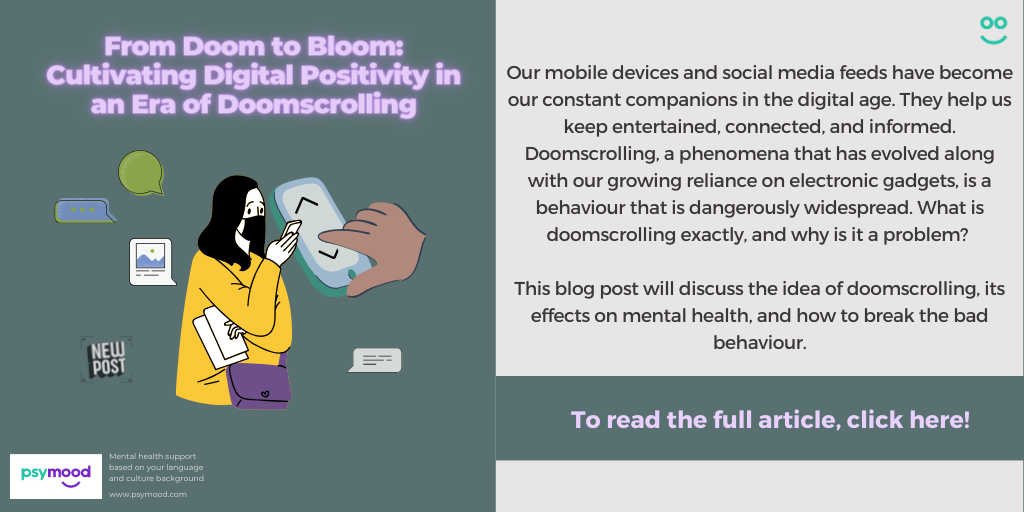From Doom to Bloom: Cultivating Digital Positivity in an Era of Doomscrolling
Our mobile devices and social media feeds have become our constant companions in the digital age. They help us keep entertained, connected, and informed. Doomscrolling, a phenomenon that has evolved along with our growing reliance on electronic gadgets, is a dangerously widespread behaviour. What is doomscrolling exactly, and why is it a problem? This blog post will discuss the idea of doom-scrolling, its effects on mental health, and how to break bad behaviour into digital positivity.
What exactly is Doomscrolling
Doomscrolling is the term describing the compulsive behaviour of endlessly scrolling over unfavourable news, frequently on social networking platforms or news websites. Doomscrolling entails immersing oneself in a flood of upsetting information, whether it is about global crises, political turmoil, or natural tragic events. The phrase has acquired popularity, especially in light of the COVID-19 pandemic, at which time many individuals were glued to their screens and absorbed every piece of worrisome information.
The Impact on Mental Health
- Increased Anxiety and Stress: Constant exposure to negative news can elevate anxiety levels, leading to chronic stress and a sense of helplessness.
- Disrupting Sleep Patterns: Engaging in doomscrolling, especially before bedtime, can interfere with sleep, causing insomnia and sleep disturbances.
- Negative Thought Patterns: Doomscrolling can reinforce negative thought patterns, amplifying feelings of fear, sadness, and despair.
- Reduced Productivity: Spending excessive time on negative news feeds can diminish productivity and focus, affecting work and personal life.
Breaking the Cycle: Overcoming Doomscrolling
- Set Boundaries: Allocate specific times during the day for checking news updates and social media. Avoid screens at least an hour before bedtime to improve sleep quality.
- Curate Your Content: Be mindful of the content you consume. Unfollow accounts or mute keywords that consistently share distressing news.
- Practice Mindfulness: Engage in mindfulness activities like meditation and deep breathing to stay present and manage anxiety.
- Stay Informed, Not Overwhelmed: Choose reliable news sources and limit your news intake to verified, important information. Avoid redundant or sensationalist coverage.
- Distract Yourself Positively: Instead of scrolling, engage in hobbies, exercise, or spend quality time with loved ones. Positive activities can counteract the negative effects of doomscrolling.
Despite its seeming innocence, doomscrolling has serious negative effects on mental health.By understanding the negative impact of this behavior and adopting mindful scrolling habits, we can regain control over our digital lives and protect our mental well-being. Let’s put emphasis on positivity, balance, and self-care in the digital sphere, making sure that our interactions with the internet enhance rather than diminish our pleasure.
PsyMood is a digital tool designed to help you find the support you need in the language that you are most comfortable with. PsyMood considers cultural background, geographical location, interests, and personal needs, amongst other factors, to pair you with service providers for either online or in-person therapy sessions.
For More Interesting Posts
You may also be interested in learning more about Bed Rotting – A Trend Among Gen Z and Its effecting Mental Health, The Immersive World of 8D Music, and Work Life Balance: A Guide For The Sandwich Generation.


.png)
.png)
.png)
Recent Comments